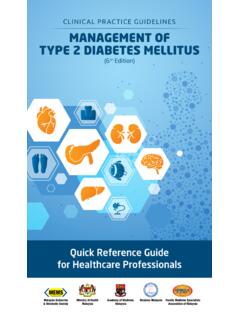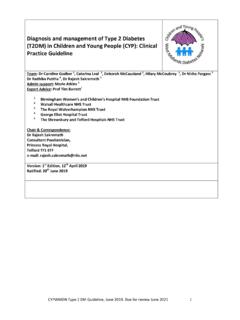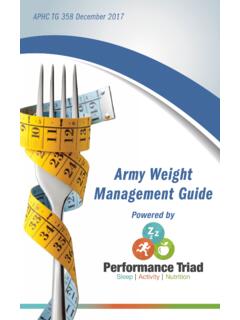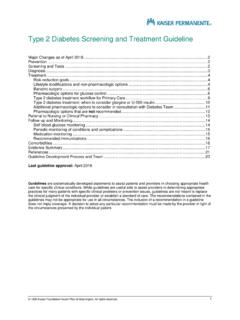Transcription of Abnormal LFT Guidelines - northoftyneapc.nhs.uk
1 Liver Network Guidelines for the Management of Adults with Asymptomatic Liver Blood Test Abnormalities Dr Mark Hudson Dr Stuart McPherson On behalf of the North East & North Cumbria Hepatology Network 1. Version History: Date: Sept 2020 Version: Review Date: Sept 2023. Acknowledgements: The authors gratefully acknowledge Professor Jane Metcalf, Dr Chris MacDonald &. Dr Quentin Anstee for their helpful review and comments. The original Newcastle, North of Tyne and Northumberland guideline development group, Professor C Day, Mr A Hodge, Dr M Hudson, Dr P McKenna, Dr D Neely, Dr E Phillips, Dr G. Pilkington, Dr C Robson. 2. Version History: Date: Sept 2020 Version: Review Date: Sept 2023. Introduction This guideline relates to adults with only vague or no symptoms or signs of liver disease, found to have Abnormal liver blood tests.
2 This guideline does not apply to children. It is recognised that Abnormal liver blood tests are an increasingly common presentation in primary care, in part due to the growing number of individuals with non-alcoholic fatty liver disease (NAFLD). This guideline makes recommendations for the diagnosis and management of adults with Abnormal liver function tests with little or no symptoms, and is intended for use by all clinicians in the North East and North Cumbria in the diagnosis and management of these patients. The interventions should be offered to all people who are likely to benefit, irrespective of race, disability, gender, age, sexual orientation or religion. Information should be provided to patients in an accessible format and consideration should be given to mobility and communication issues, and being aware of sensitive and cultural issues.
3 3. Version History: Date: Sept 2020 Version: Review Date: Sept 2023. STEP 1 PATTERN RECOGNITION. What sort of abnormality do the Abnormal liver blood tests suggest? a. Isolated raised bilirubin most commonly due to Gilbert's syndrome. This is a benign condition and does not need referral. It occurs in about 5% of the population. Repeat Liver blood tests on a fasting sample with an FBC. The bilirubin should rise further and there should be no evidence of anaemia. If the patient is anaemic haemolysis needs to be excluded (reticulocyte count, LDH). b. Cholestatic pattern Alkaline phosphatase (Alk phos) raised significantly more than ALT. Remember bone causes of raised Alk phos Paget's Disease. Repeating LFTs with a GT can help confirm a liver cause.
4 C. Hepatitic pattern Most marked abnormality is a raised ALT (and AST if reported), though Alk phos may also be raised. These can be short-lived, due to intercurrent illness, reverting to normal a few weeks later. The bulk of this guidance refers to patients with this pattern of abnormality. 4. Version History: Date: Sept 2020 Version: Review Date: Sept 2023. STEP 2 FIRST ASSESSMENT. Given that the most common causes of Abnormal liver blood tests are NAFLD. (commonly associated with other features of the metabolic syndrome), alcohol excess and adverse drug reactions, a careful drug/alcohol history should be taken and other features of the metabolic syndrome (hypertension, diabetes, obesity and Abnormal lipids) should be sought. Consider using the AUDIT or FAST questionnaire for detecting hazardous or harmful drinking.
5 Patients should be given general advice as appropriate (reduction in alcohol intake, weight reduction by diet and exercise ). and any drugs known to be associated with drug induced liver injury should be stopped if possible. Of particular note are NSAIDs. These should be stopped and Liver blood tests repeated after 3 months. In cholestatic abnormalities antibiotics especially flucloxacillin are relatively common cause. Many other drugs that cause Abnormal liver blood tests are more difficult to stop ( neuroleptics, anti-epileptics). Referral to a liver clinic for advice is appropriate in these circumstances. Patients with severe alcohol problems should be referred when appropriate. Repeat the LFTs, requesting AST and GT also, with an FBC.
6 When to repeat the LFTs? a. Isolated raised bilirubin fasting sample when convenient b. Isolated raised Alk phos (confirmed as liver with GGT) no delay needed c. Isolated ALT repeat in 1-3 months d. A raised ALT or Alk phos that is over 3x the upper limit of normal should have the above done without delay at the same time as a liver screen and USS (step 3). e. A raised ALT or raised Alk phos, in combination with raised bilirubin should be referred routinely to a liver clinic or gastroenterologist. Please order an USS of liver / spleen / pancreas routinely at the same time. 5. Version History: Date: Sept 2020 Version: Review Date: Sept 2023. The presence of unexplained clinical jaundice should lead to immediate referral. STEP 3 SECOND ASSESSMENT (PERSISTENTLY Abnormal LIVER BLOOD.)
7 TESTS). If the abnormalities have persisted for 1-3 months despite the above measures, then a liver screen should be arranged: a. Viral screen (HBsAg, HCVAb). b. Autoantibodies ANA, AMA, ASMA and immunoglobulins c. Coeliac screen (TTG Ab). d. Ferritin and Transferrin Saturation e. Fasting blood glucose, fasting lipids f. USS liver, biliary tree, pancreas STEP 4 DECIDE WHO TO REFER. The history taken and results so far should point to possible pathologies causing the Abnormal Liver blood tests. Most of the list below will need referral for further assessment and management. Chronic viral hepatitis history of risk behaviours, blood transfusion and positive markers. Primary biliary cholangitis raised Alk phos (cholestatic pattern), positive anti- mitochondrial antibody.
8 Primary sclerosing cholangitis history of inflammatory bowel disease, cholestatic pattern on LFTs. Autoimmune hepatitis positive autoantibodies (smooth muscle, antinuclear antibodies and typically a raised IgG), might have history of other autoimmune diseases, Haemochromatosis raised ferritin and transferrin saturation (>45%). Might have history of diabetes and joint pain. 6. Version History: Date: Sept 2020 Version: Review Date: Sept 2023. USS the presence of dilated bile ducts requires further assessment and URGENT hospital referral. Any reported dilation of the biliary tree is significant. Many of these patients in the list below will not require referral. Low risk patients with Fatty Liver can be managed in primary care. Alcohol-related fatty liver disease from history, raised MCV, fatty liver on USS.
9 Advanced alcoholic liver disease is indicated by nodular liver, splenomegaly or other signs of portal hypertension on USS, low platelets, low albumin or raised bilirubin NAFLD USS shows fatty liver only, remainder of screen is negative. Patients likely to have raised BMI or increased waist circumference, hypertension, impaired fasting glucose (IFG) or diabetes, raised fasting triglyceride and low HDL cholesterol. The hazardous drinker without evidence of advanced liver disease requires advice, regular counselling and, where appropriate, referral to secondary alcohol specialists. These patients should not be referred to liver clinics. STEP 5 RISK STRATIFICATION OF PATIENTS WITH NAFLD. NAFLD represents a spectrum of metabolic syndrome-associated liver disease progressing from simple steatosis (fat but no inflammation or hepatocellular injury), through non-alcoholic steatohepatitis (NASH = fat + inflammation+ hepatocellular injury) and fibrosis to cirrhosis.
10 Estimates suggest that up to a third of the population has NAFLD. Approximately 40% of patients with NAFLD develop progressive fibrosis, which can progress to cirrhosis in 10%. Patients with cirrhosis are at risk life threatening liver related complications, such as hepatocellular carcinoma, portal hypertension and liver failure. Stage of liver fibrosis is the most important prognostic factor and patients with moderate or severe liver fibrosis are at significant risk of liver related complications in 7. Version History: Date: Sept 2020 Version: Review Date: Sept 2023. the future. There are algorithms based on simple blood tests and clinical parameters that can accurately exclude advanced fibrosis, and these can be used to triage patients who require referral to secondary care for further investigation and management.








